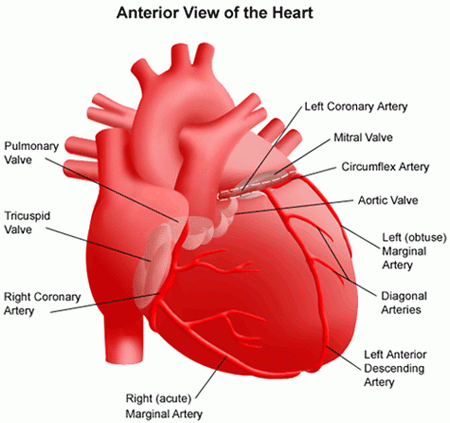Your complete guide to Cardiology: Understanding risk, prevention, and care
Your complete guide to Cardiology: Understanding risk, prevention, and care
Blog Article
Comprehending the Relevance of Cardiology in Modern Healthcare Solutions
Cardiology plays a vital role in contemporary healthcare, particularly as cardiovascular disease continues to be the leading root cause of mortality worldwide. Breakthroughs in diagnostics and treatment have changed client treatment, making it possible for earlier treatments and improved end results. Additionally, the change in the direction of precautionary cardiology equips people to manage their health and wellness proactively. As innovation remains to evolve, the assimilation of ingenious services might further redefine cardiology's effect on public health, prompting a closer exam of arising trends and their implications.
The Prevalence of Heart Illness and Its Effect On Public Wellness
Heart disease stays the leading cause of fatality around the world, its influence expands far beyond private clients to affect public wellness systems and economies. The high prevalence of heart problem positions a substantial strain on medical care sources, requiring boosted funding for treatment, avoidance, and recovery programs. Public health initiatives should resolve danger elements such as obesity, cigarette smoking, and inactive way of lives, which contribute significantly to the increasing occurrence of heart conditions.Moreover, the economic burden linked with heart problem is immense, encompassing not just straight clinical expenses but also indirect costs connected to shed productivity and early death. Areas face obstacles in taking care of these expenses, usually leading to disparities in health care gain access to and outcomes. As the populace ages and lifestyle-related threats continue to rise, the urgency for efficient cardiology treatments ends up being critical. Dealing with heart condition is not only an issue of private wellness however also a critical public health concern.
Developments in Heart Diagnostics and Imaging Techniques
Current developments in heart diagnostics and imaging strategies have actually reinvented the area of cardiology, improving the capability to detect and keep track of heart problem. Techniques such as cardiac MRI, CT angiography, and echocardiography have come to be progressively innovative, offering comprehensive photos of heart structures and features. These methods enable for the early recognition of conditions like coronary artery disease, cardiac arrest, and valvular disorders.Moreover, developments in non-invasive diagnostics, such as wearable innovation and remote tracking devices, have encouraged individuals and healthcare service providers. These devices promote real-time monitoring of heart rhythms and other vital indications, causing prompt interventions. In addition, expert system is being incorporated right into imaging analysis, boosting accuracy and performance in diagnosis.
Innovations in Treatment Options for Heart Conditions
Current advancements in cardiology have actually led to substantial advancements in treatment choices for heart conditions. These include sophisticated surgical methods that boost step-by-step results and emerging medications that offer brand-new opportunities for therapy. As the area develops, these developments play a crucial duty in boosting person care and end results.
Advanced Surgical Techniques
Technologies in surgical strategies have changed the landscape of cardiology, offering brand-new hope for clients with heart disease. Minimally invasive procedures, such as catheter-based treatments, have actually significantly minimized recuperation times and health center stays. Methods like robotic-assisted surgery improve accuracy, allowing surgeons to browse complicated anatomical structures with higher precision. Moreover, advancements in imaging technology help with real-time visualization during procedures, improving end results. Transcatheter aortic shutoff substitute (TAVR) exhibits a development in dealing with aortic stenosis, allowing valve substitute without open-heart surgical procedure. Additionally, hybrid strategies that incorporate catheter-based and surgical techniques provide customized services for numerous cardiac issues. These advanced medical methods not just boost individual security however additionally expand therapy choices, highlighting the essential duty of technology in modern-day cardiology methods.
Emerging Medicines and Treatments
As the landscape of cardiology remains to progress, arising therapies and medicines play an essential duty in enhancing therapy choices for heart conditions. Advancements such as unique anticoagulants and advanced lipid-lowering agents have actually transformed the administration of cardiovascular diseases, significantly decreasing person morbidity and death. In addition, the growth of genetics treatments and regenerative medication offers appealing methods for treating conditions formerly deemed incurable. Clinical tests are constantly revealing the efficiency of these therapies, pushing the borders of conventional treatments. The combination of electronic health and wellness technologies assists in customized medication, enabling for tailored treatment strategies based on genetic and lifestyle elements. Jointly, these advancements highlight the dynamic nature of cardiology, boosting client end results and redefining requirements of care in modern medical care.
The Duty of Preventive Cardiology in Person Care
Preventive cardiology plays a crucial role in client treatment by concentrating on the identification of risk elements that add to heart condition. With way of life alteration techniques and early detection techniques, health care companies can effectively lower the incidence of cardiovascular occasions - Dr Garcia. This proactive method not just enhances person outcomes but additionally advertises long-term health and wellness
Risk Variable Identification
While heart diseases stay a leading source of morbidity and death worldwide, efficient threat variable recognition functions as a keystone of preventative cardiology. Identifying danger variables such as hypertension, diabetic issues, household, and hyperlipidemia history is crucial for early intervention. Healthcare experts make use of numerous screening approaches to examine these elements, enabling customized safety nets. Additionally, comprehending a person's way of living choices, such as cigarette smoking and physical inactivity, better notifies risk evaluations. This thorough evaluation makes it possible for medical professionals to develop individualized care strategies focused on mitigating dangers. By prioritizing danger factor recognition, healthcare systems can enhance client end results and reduce the overall concern of cardio conditions, inevitably contributing to boosted public wellness techniques and resource allocation.
Lifestyle Adjustment Approaches
A plethora of research studies highlights the essential Related Site function of way of living alteration strategies in lowering cardiovascular disease risk. These strategies incorporate dietary modifications, increased exercise, smoking cigarettes cessation, and weight monitoring. By taking on a heart-healthy diet plan rich in fruits, veggies, whole grains, and lean healthy proteins, people can decrease cholesterol degrees and high blood pressure. Routine physical activity enhances the heart and improves overall cardiovascular health. Additionally, quitting smoking cigarettes significantly lowers the danger of heart condition and enhances recovery rates for those with present problems. Weight monitoring additionally adds to cardio wellness by mitigating other risk aspects such as diabetes mellitus and high blood pressure. Executing these lifestyle changes not just promotes individual health however also offers as a keystone of precautionary cardiology in client care.
Early Detection Techniques
Way of life alterations significantly add to lowering heart disease dangers, yet they are most effective when matched with very early detection strategies. Preventive cardiology stresses the value of determining prospective heart problems before they escalate into significant conditions. Techniques such as high blood pressure monitoring, cholesterol testing, and progressed imaging innovations like echocardiograms play essential roles in reviewing cardio health. Biomarkers and hereditary testing additionally improve the precision of very early discovery, enabling customized preventive techniques. Routine cardiac risk assessments empower health care providers to interfere proactively, potentially avoiding cardiovascular disease and strokes (Cardiology). By incorporating these early discovery approaches right into routine treatment, clients can gain from timely way of living interventions and targeted therapies, inevitably improving and improving results lifestyle
Integrating Technology Into Cardiology Practices
As improvements in innovation remain to improve numerous areas, the integration of cutting-edge tools and systems into cardiology methods has actually ended up being important for improving patient care and results. Telemedicine platforms permit cardiologists to keep an eye on people remotely, improving accessibility to care while minimizing the problem on medical care facilities. Wearable devices, such as smartwatches, enable continual heart price tracking, alerting both people and doctors to prospective problems in real-time. Furthermore, expert system (AI) is being utilized to assess large amounts of cardiac data, aiding in very early medical diagnosis and personalized treatment strategies. Advanced imaging techniques, consisting of 3D echocardiography, enhance visualization of heart frameworks, bring about much more exact interventions. Digital health and wellness documents (EHRs) simplify person info monitoring, guaranteeing that cardiologists have instant accessibility to crucial data. Together, these technical improvements are changing cardiology, promoting proactive management and improved wellness end results for individuals with cardiovascular problems.
The Relevance of Patient Education and Engagement
Individual education and interaction play a pivotal duty in the management of cardio health. By furnishing clients with expertise regarding their conditions, therapy options, and way of life adjustments, medical care carriers empower individuals to take an active function in their treatment. This positive technique can bring about enhanced adherence to suggested medicines, dietary modifications, and workout regimens, ultimately minimizing the danger of complications.Engagement additionally cultivates a solid patient-provider connection, urging open interaction and depend on. When people feel informed and entailed, they are more probable to voice issues and ask inquiries, which can lead to better medical outcomes. Additionally, educational sources, such as workshops or digital platforms, can improve understanding and advertise self-management approaches. Generally, focusing on individual education and learning and involvement is crucial for improving cardio health, boosting top quality of life, and minimizing medical care expenses connected with cardiovascular illness.
Future Patterns in Cardiology and Their Prospective Impact

Frequently Asked Inquiries
What Way Of Living Adjustments Can Reduce Cardiovascular Disease Risk?
The present concern addresses way of life modifications that can considerably minimize cardiovascular disease threat. Cardiology. Adopting a balanced diet plan, engaging in routine physical task, maintaining a healthy weight, taking care of stress, and staying clear of tobacco can notably improve cardiovascular wellness
Just How Can I Acknowledge Very Early Indicators of Heart Troubles?
Identifying very early indicators of heart problems involves tracking signs such as chest discomfort, shortness of breath, tiredness, and uneven heartbeat. Prompt understanding of these indications can prompt required clinical evaluation and treatment for far better outcomes.
What Are the Distinctions Between Cardiologists and Heart Surgeons?
The differences between cardiologists and heart cosmetic surgeons exist in their duties; cardiologists mainly manage and identify heart disease through non-invasive methods, while cardiac doctors carry out medical treatments to deal with structural heart concerns. Each plays an essential, distinct duty.

How Commonly Should I Get My Heart Wellness Checked?
The regularity of heart wellness checks differs based on private threat aspects. Generally, grownups ought to undergo assessments every one to two years, while those with existing problems may require more constant assessments as encouraged by healthcare professionals.
What Function Does Genetics Play in Heart Disease Threat?
Genetics significantly influences heart problem threat, with domestic patterns showing inherited problems. Certain genetics can predispose individuals to high blood pressure, cholesterol problems, and various other cardiovascular problems, highlighting the relevance of hereditary testing in reviewing heart wellness. Heart condition stays the leading cause of fatality around the world, its effect expands much past private people to impact public health systems and economic situations. Public health initiatives should address danger aspects such as excessive weight, smoking cigarettes, and inactive way of livings, which add substantially to the rising incidence of heart conditions.Moreover, the financial burden linked with heart disease is immense, encompassing not only direct clinical expenses yet likewise indirect expenses connected to lost productivity and early death. Preventative cardiology plays an essential duty in client treatment by focusing on the identification of threat aspects that contribute to heart condition. Man-made knowledge (AI) and machine discovering are boosting diagnostics and person surveillance, enabling early discovery of heart illness. The distinctions in between cardiologists and cardiac surgeons lie in their functions; cardiologists primarily identify and take care of heart conditions with non-invasive approaches, while heart doctors carry out surgical procedures to correct architectural heart issues.
Report this page